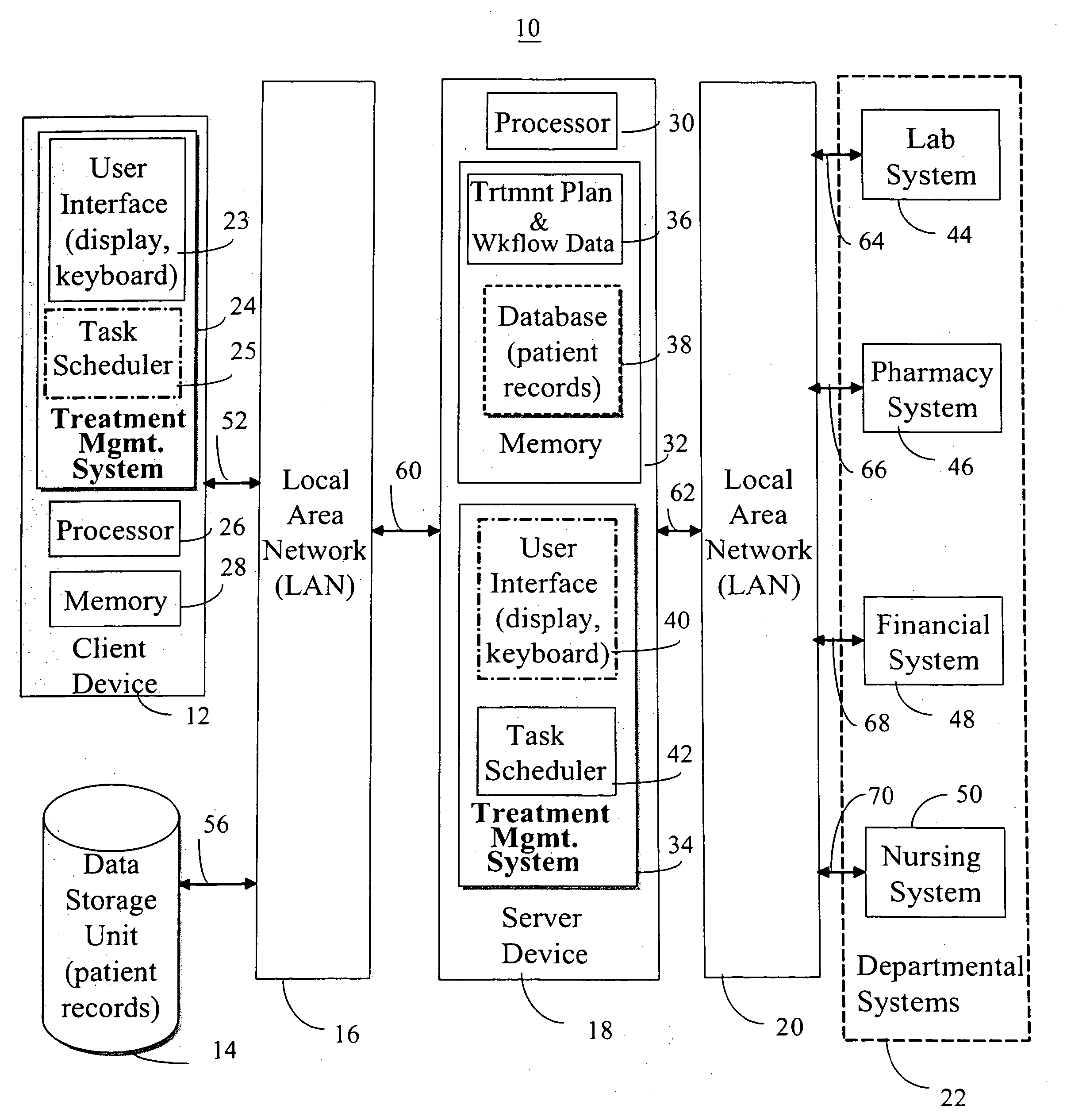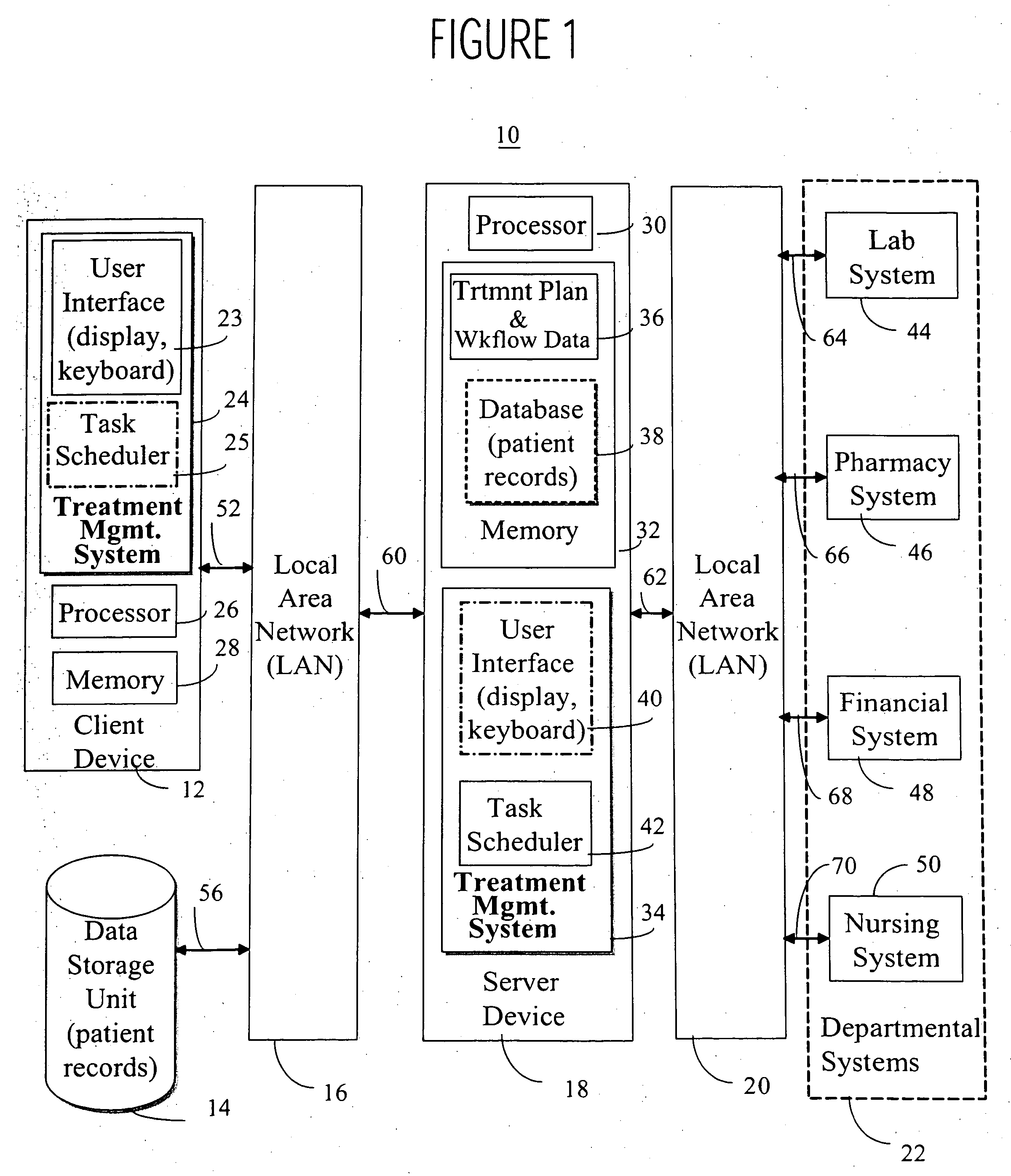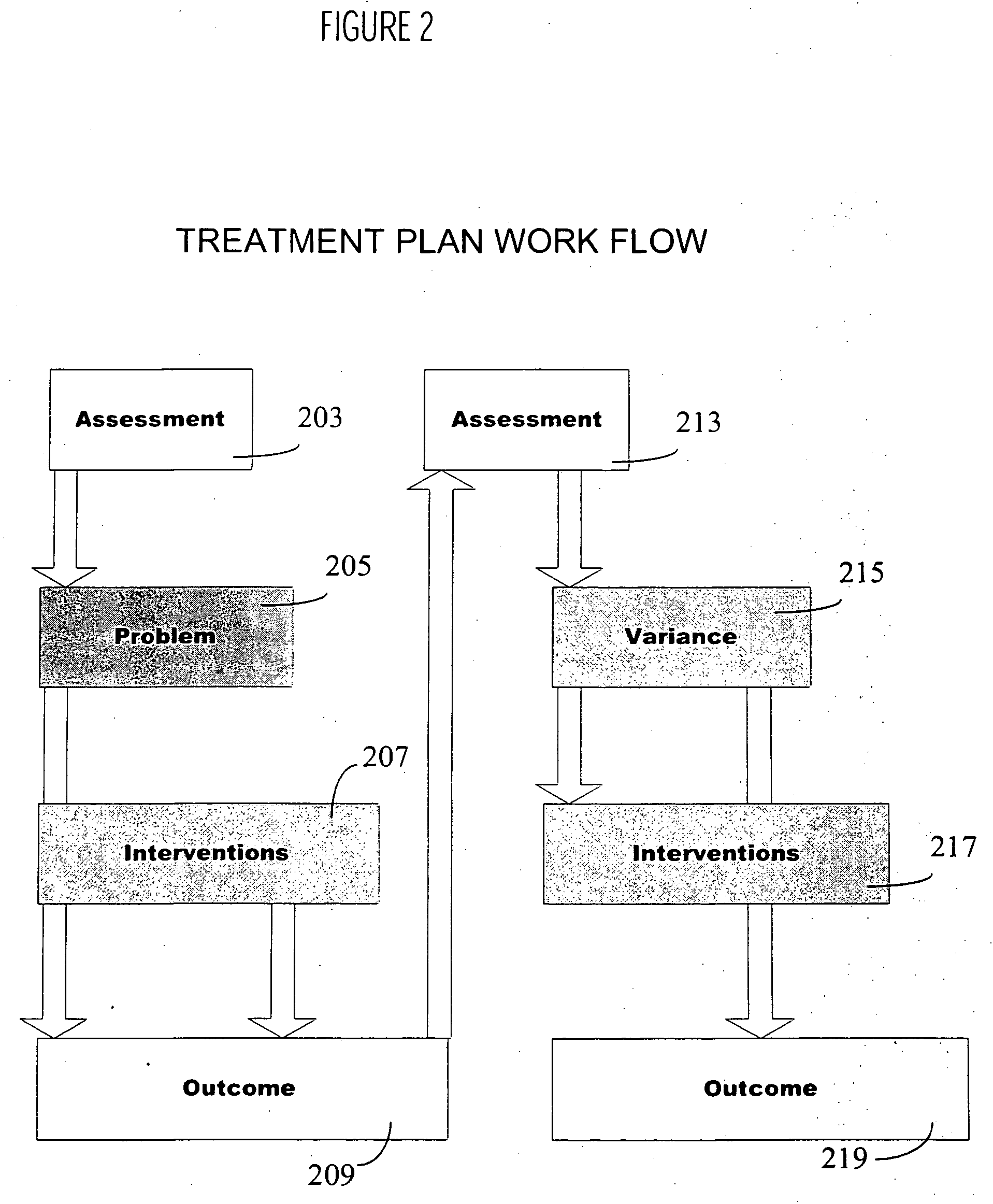Treatment data processing and planning system
a treatment data and planning system technology, applied in the field of treatment data processing and planning system, can solve the problems of insufficient retrospective documentation, large time and burden involved in managing treatment plans, and inability to use standardized care plans
- Summary
- Abstract
- Description
- Claims
- Application Information
AI Technical Summary
Benefits of technology
Problems solved by technology
Method used
Image
Examples
Embodiment Construction
[0011]FIG. 1 shows a networked hospital information system including a patient treatment management system 34. Automated treatment management system 34 manages care plan analysis, variance processing and associated documentation to ensure compliance of patient care with a plan. System 34 allocates standardized treatment goals and variance codes (identifying a variation of patient treatment from planned treatment). This increases a healthcare provider organizations ability to produce meaningful reports, and to determine best practices models. System 34 automatically monitors delivery of treatment to a plan and variations from plan and generates alerts based on such variations enabling patient care to be reassessed in a more timely manner, thus reducing risk and lowering cost by ensuring use of appropriate care plans. System 34 manages quality, safety, outcomes, variances, and resources (manpower and supplies) and reduces the documentation burden on healthcare providers enabling great...
PUM
 Login to View More
Login to View More Abstract
Description
Claims
Application Information
 Login to View More
Login to View More - R&D
- Intellectual Property
- Life Sciences
- Materials
- Tech Scout
- Unparalleled Data Quality
- Higher Quality Content
- 60% Fewer Hallucinations
Browse by: Latest US Patents, China's latest patents, Technical Efficacy Thesaurus, Application Domain, Technology Topic, Popular Technical Reports.
© 2025 PatSnap. All rights reserved.Legal|Privacy policy|Modern Slavery Act Transparency Statement|Sitemap|About US| Contact US: help@patsnap.com



